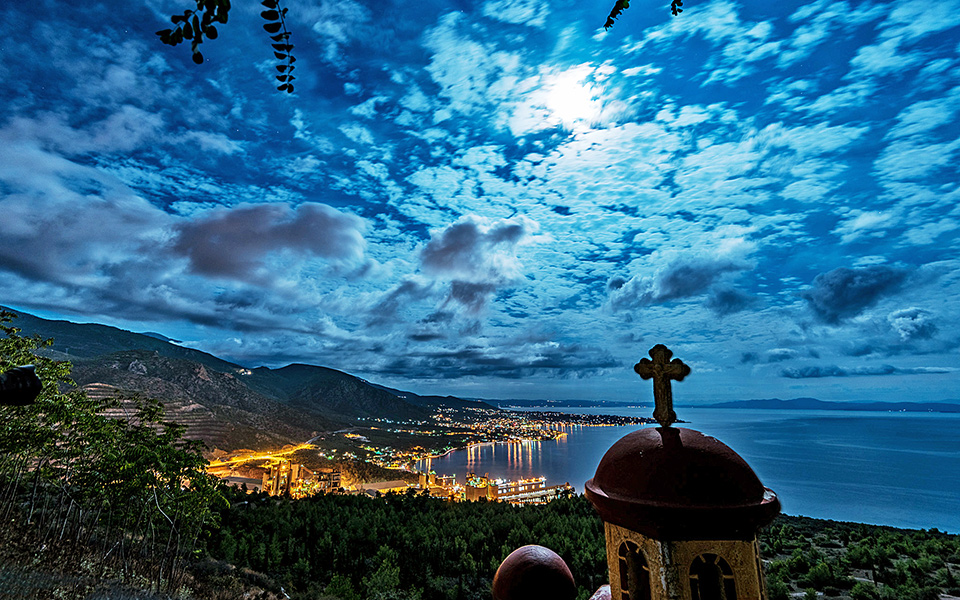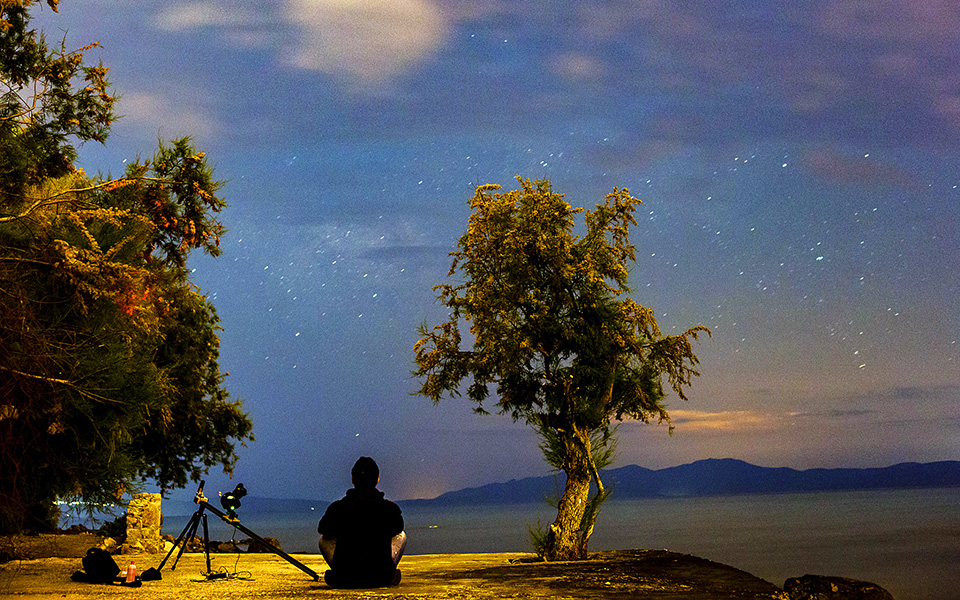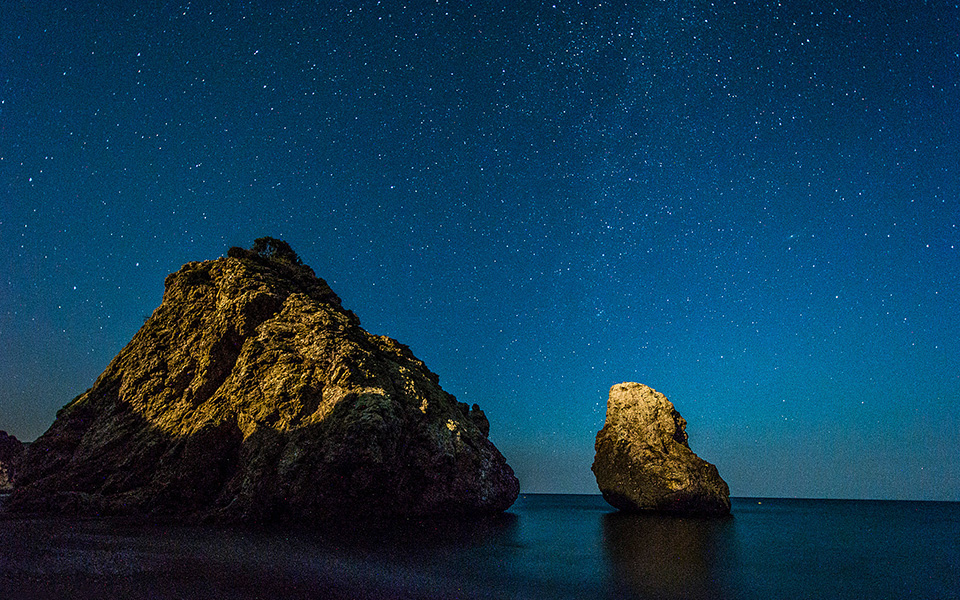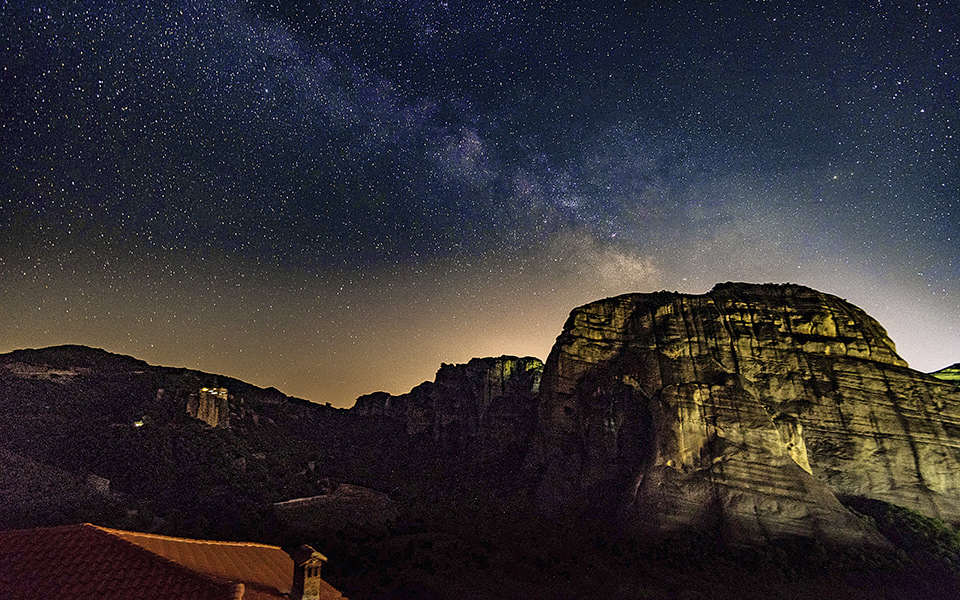Top 5 Archaeological Discoveries in Greece in 2024
From a mysterious Minoan structure to...

Over 365 days, Filippou took 55,000 photos, clocked up 825 hours of shooting, traveled 8,400k and spent 650 hours editing.
I dare you to watch this glorious, six-minute time-lapse celebration of the Greek night sky and not to be moved by it. The cynic will think it’s the closing message that charges the content emotionally. To a certain degree maybe it is, but I think it’s mostly the content itself that leaves you with a sense of spiritual awe. You don’t need to be religious or a romantic to feel that; the rarity of the experience itself is enough to lend it a sort of otherworldliness. Photographer Panagiotis Filippou, 37, retraces for us his celestial journey to the Greek Skies.
Filippou first fell in love with photography at the age of seven, when his father bought him his first Kodak. “I’m told I was really obsessed with freezing time and memories,” he reveals. It was during his university student years, however, that he became really serious about photography and bought his first camera, a second-hand Nikon SLR, with which he “advanced from point and shoot to aperture and manual mode.” For Filippou, photography is still mostly a hobby rather than a profession, but he would not hesitate, were the right opportunity to arise, to work exclusively as a photographer. “Only when man turns his love into a job can he feel complete,” he says.

"Τhe starry night sky is something people rarely get to see in big cities, mostly because of light pollution." Photo taken at Agios Minas, Pelion.
TURNING TO THE HEAVENS
The idea for Greek Skies was born during one of Filippou’s business trips to Los Angeles, where Greek expats kept urging him to “do something in Greece to promote the country’s image abroad.” The choice of theme was both aesthetic and symbolic. Filippou reckoned that the starry night sky is something people rarely get to see in big cities, mostly because of light pollution. Moreover, however, photographing the Greek night sky was a way for Filippou to be close to his recently departed father who, he felt, was now residing in the heavens. “I felt closer to dad during the night, being out there shooting stars all alone in the dark, while praying at the same time for him and his soul. This was my dad-time, making up for the time I hadn’t spent with him here on earth.”

This amazing nightshot was taken in Xinovrisi beach at Pelion.
NOT LOSING SIGHT OF THE GOAL
Filippou began filming in 2014 after getting a special permit to shoot on Mount Athos, in northern Greece, home to 20 monasteries and an ideal location for time-lapse photography. “No light pollution, amazing scenery of monasteries and wild places, nature with rock formations that no one has ever seen before!” The initial plan was to shoot there exclusively, but the recession and imposition of the capital controls in the summer of 2015 made it impossible for Filippou to keep going back and forth to Mount Athos from his home base in Volos, Thessaly. Filippou was disheartened at first, but instead of postponing his filming on Mount Athos to a later date, he simply changed the plan. He put the Mount Athos footage aside for a future project and started scouting for alternative locations. They needed to be interesting landscapes, not photographed before using the time-lapse technique nor polluted by lights. From his travels he had some locations in mind and he found the rest by consulting light pollution maps on the internet. Some of the places that made it into the final video are Pelio, Volos, Thessaly, Antiparos island, Kalavryta, Patras, Kalambaka and Meteora, whose monasteries perch on some of the most gorgeous rock formations in the country.
Let’s say you point your camera towards a sky with clouds but, instead of letting it film continuously for hours, you program it to shoot one picture every 30 seconds. This way, a four-hour shoot, for example, will give you 480 photos. When you stitch all the photos together in the editing room and play the sequence back at a rate of 30 pictures per second, the clouds, stars or any movement for that matter will appear in fast motion. With the time-lapse technique you have managed to shrink time.

Nighttime or daytime, the scenery at Meteora is always mesmerising.
BEFORE NIGHTFALL
Preparing for a night’s shooting involved a meticulous routine that would begin long before nightfall: cleaning lenses and other gear, checking battery supplies, packing the equipment and preparing snacks or dinner and water supplies. He would then inform friends and relatives of his destination and shooting schedule and hit the road so he could reach the location before dark. “I didn’t want to end up arriving and finding someone else already occupying the place, either camping or even shooting.”
SHOOTING STARS
Once the shooting was under way, he would sit back and do some work, like replying to emails or researching new locations. Every 15 minutes he would check to ensure everything was working properly, especially the cameras that he was not operating on remote, and then resume waiting. “If the weather was good and I was by the sea I would go for a night swim. I might also shoot some behind-the-scenes photos, or walk around to get some fresh air, or when bored watch a movie.”

Unreal clouds at Panagias monastery in Volos.
STAR- AND AWARD-STUDDED
Over 365 days, he took 55,000 photos, clocked up 825 hours of shooting, traveled 8,400k and spent 650 hours editing. The finished product was aired on December 20, 2015 to a lukewarm response. It was only after it won the “Best of the Fest” at the Hollywood International Independent Documentary Awards and was selected as a finalist in the Los Angeles International Independent Film Festival Awards (which it will open on January 23) that it got media attention and went viral. Greek Skies also won best experimental film for December at the 12 Months Film Festival in Romania and has been accepted in nine more international film festivals in 2016.
From a mysterious Minoan structure to...
A 3D reconstruction by Oxford researcher...